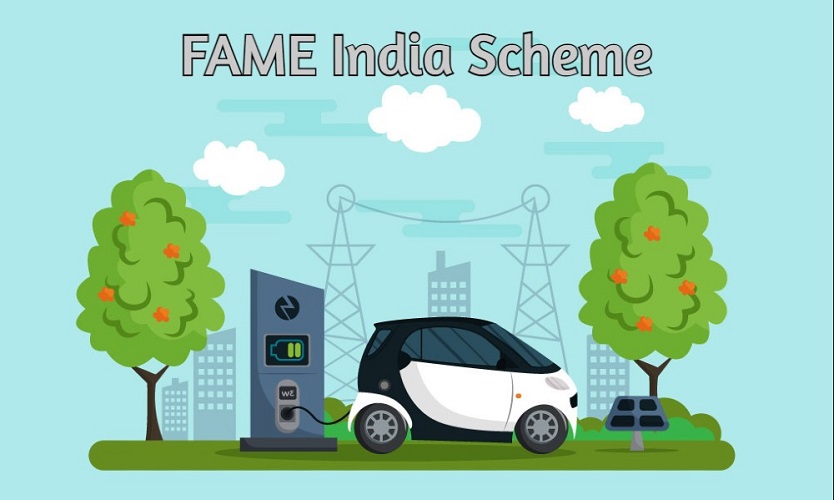Why the scheme is in the news?
Officials said that India could launch the next phase of its primary subsidy scheme for electric vehicles – Faster Adoption and Manufacturing of Electric vehicles, only if the funds allocated for it remain unused at the end of the current financial year.
Buy Prime Test Series for all Banking, SSC, Insurance & other exams
Ministry: – Ministry of Heavy Industries
Launch Year: – 2015
Implementing Body: – National Automotive Board under D/o Heavy Industry
Objectives: –
The Fame India scheme has the following main goals:
- to incentivize electric vehicle manufacturers and associated industries to produce more electric vehicles domestically,
- to reduce vehicle emissions and air pollution levels, to establish an electric charging infrastructure,
- and to achieve a 30% conversion of total transportation into electric vehicles by 2030.
Key Characteristics of the Fame India Scheme
The FAME India Scheme is divided into two phases: Phase I and Phase II. The first phase began in 2015 and was operational until March 31, 2019. The second phase started in April 2019 and is set to continue until March 31, 2022. Recently, the government has announced that it will further extend Phase II until March 31, 2024.
Phase I
During the first phase of the scheme, the authorities concentrated on four critical areas:
- demand creation,
- technology platform,
- pilot projects, and
- charging infrastructure.
In this phase, the government established 427 charging stations. The government allocated ₹895 crores to cover the expenses of Phase I, where approximately ₹359 crores were provided to support nearly 2.8 lakh electric vehicles.
Phase II
In the second phase of the Fame India Scheme, the main focus is on the electrification of public and shared transportation. The government has allocated a budget of ₹ 10,000 crores for this phase. The scheme offers incentives for various categories of vehicles, such as electric two-wheelers, electric four-wheelers, hybrid four-wheelers, e-rickshaws, and e-buses. For example, registered electric two-wheelers can receive an incentive of ₹ 20,000 each, while e-buses with a maximum ex-factory price of ₹ 2 crores can receive an incentive of ₹ 50 lakh each. Additionally, the government is aiming to establish 2700 charging stations across the country in metros, smart cities, hilly states, and million-plus cities, following a 3 km x 3 km layout. Charging stations will also be established on highways, with a gap of 25 km between two consecutive stations.
Benefits of the FAME India Scheme
The Fame India Scheme provides various advantages, such as reducing issues related to environmental and fuel conservation, providing subsidy benefits to different vehicle segments, promoting eco-friendly public transportation, encouraging the use of renewable energy sources through charging systems, and establishing charging stations nearby. To be eligible for these benefits, applicants must fall into the categories of electric vehicle manufacturers or electric vehicle infrastructure providers.
Challenges and issues related to FAME India Scheme
FAME’s focus on accelerating electric and hybrid vehicle production in India is being questioned due to uncertainties about whether there will be sufficient demand for these vehicles. Electric two- and three-wheelers are better suited to Indian road conditions, and electric scooter ride-sharing has become popular in many Western cities. This trend could revolutionize urban transportation in India, but FAME discourages the use of smaller vehicles to correlate the incentives’ value with the car battery’s size. As a result, about 95% of electric two-wheeler models produced in India will not be eligible for incentives under FAME-II.
You may also read this:
- Vivad se Vishwas Scheme I: Relief for MSMEs impacted by COVID-19
- Smart Cities Mission in India: Objectives, Principles, and Characteristics
Find More News Related to Schemes & Committees







 States and Capitals - How Many States in...
States and Capitals - How Many States in...
 Australia to Recognise Palestinian State...
Australia to Recognise Palestinian State...

